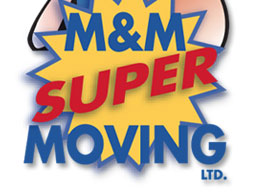Moving Across State Lines? Here’s What You Should Know.

Moving to a new state can be intimidating. In addition to the normal stresses of moving, you’ll have other responsibilities and tasks to handle, such as changing your license. These added responsibilities can make the already stressful process of moving even more daunting. However, this shouldn’t stop you from tackling your state-to-state move head-on.
DIY vs Professional Movers
You have one of two options when moving across state lines: you can either do it yourself by renting a moving van, or you can hire a professional moving company. So, which is the best option? There are advantages and disadvantages associated with each. Some people prefer to move themselves, as this is usually (not always) cheaper and provides greater control over the process, whereas others prefer the hands-off convenience of hiring professionals.
If you plan on moving everything yourself, check with the truck rental company to see if they have a drop-off station around your new home. If the company does not have a drop-off station, you’ll be forced to drive the rental truck back to the original location, which costs you additional time and money.
Pack and Load Efficiently
Hiring a professional moving company can an enormous amount of stress off your shoulder when moving to a new state. They’ll handle the laborious task of loading and unloading your belongings, as well as driving them across state lines.
When moving across state lines, you want to make the fewest amount of trips as possible. No one wants to drive for hours on the interstate, especially when it can be avoided. To reduce the number of trips required, make sure all of your boxes are efficiently packed with minimal open space. Try placing large flat items in boxes first, such as books, and then covering it with loose “filler” items, such as clothes. Your goal when packing is to fill every available inch of box space with your belongings.
Driver’s License
Once you’ve moved into your new home, you should contact the local Department of Motor Vehicle (DMV) to order a new driver’s license. Requirements vary from state to state, but most places require residents to get a new driver’s license within 30 days of moving.
Car Tag
If you own a car, truck or other full-sized vehicle, you will need to acquire a new tag for it. This is typically done through the respective county’s tax office, so contact them once you are settled in for more information.
Our team of moving professionals are here to help. We specialize in making your move as stress-free as possible and we would love to help with your next move. Get a free online moving quote today.
Read more posts about moving long distances.
Comments Off on Moving Across State Lines? Here’s What You Should Know.





